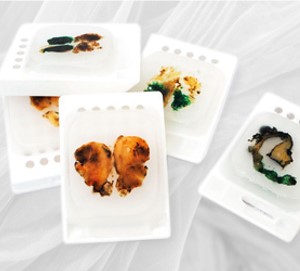
Exploring fresh frozen vs. FFPE samples for next-gen sequencing
Biopsied human specimens stand as rich repositories of disease-relevant molecular insights, pivotal for diagnoses, treatment selection, and driving innovative biomedical research endeavours. The progress in personalised cancer therapies, novel treatment modalities, biomarker discoveries, and target identifications heavily relies on the accessibility of these biopsy-derived tissue samples.
Post-biopsy analysis, tissue preservation occurs in hospital-affiliated biobanks, research facilities, or private biomedical research entities. These clinical biopsy samples manifest in diverse forms, with some better suited for next-generation sequencing (NGS) studies than others.
Commonly, human solid tissues find preservation through two predominant methods: formalin-fixed paraffin-embedding (FFPE) and fresh freezing (FF). While FFPE utilises formalin to arrest cellular processes and 'fix' tissues, FF preservation entails rapid cooling to achieve akin objectives. Each method presents its unique set of advantages and disadvantages, with selection contingent upon study requisites, research queries, methodologies, and associated logistical challenges.
Despite the relative ease of working with frozen samples in NGS applications (both DNA and RNA sequencing), FFPE samples offer distinct advantages, despite their inherent technical complexities. Encouragingly, advancements in technology and FFPE-specific protocols have emerged to address many of these challenges, facilitating the generation of reliable NGS data from FFPE samples.
Given the frequent inquiries regarding the merits and limitations of utilising FFPE and FF samples for molecular analyses, particularly RNA-Seq, we've delved deeper into this subject in the following blog article.
Fresh frozen samples
Cryopreservation involves preserving organelles, cells, tissues, or any biological structures by cooling them to extremely low temperatures. For immediate cryopreservation, biopsy tissue specimens are submerged in liquid nitrogen and stored in ultra-cold freezers at -80°C, a process commonly referred to as "flash-freezing" or "snap-freezing." When prepared and stored correctly, fresh frozen samples ensure the pristine preservation of nucleic acids, making them an ideal choice for downstream next-generation sequencing (NGS) analysis.
The DNA and RNA extracted from fresh frozen (FF) tissues exhibit superior quality compared to FFPE-derived counterparts, establishing fresh frozen samples as the benchmark for NGS. Moreover, the preparation of FF samples is less intricate, time-consuming, and devoid of toxic chemicals like formalin, distinguishing them from FFPE samples. Nonetheless, preparing and storing frozen tissue samples pose practical challenges, contributing to the limited availability of fresh frozen sample biobanks. This scarcity impedes their widespread use in large-scale retrospective tumour studies, crucial for driving advancements in cancer therapy development.
Fresh frozen sample disadvantages
• Sampling Constraints: Provision of requisite cryopreservation conditions during surgeries is often impractical.
• Storage Complexities: FF tissues necessitate specialized ultra-low-temperature freezers, susceptible to power outages or mechanical failures.
• Human Errors: Mishandling risks tissue degradation, compromising invaluable frozen tissue reserves.
Comparison between FFPE vs fresh frozen samples
The primary advantage of FFPE samples over fresh frozen (FF) ones lies in their widespread availability. FFPE samples are routinely amassed and archived during patient treatment, with a staggering estimated count ranging from 400 million to potentially over a billion FFPE samples housed in hospitals and biobanks globally. Within solid tumour biobanks alone, estimates suggest that between 50 and 80 million FFPE samples are amenable to NGS. Many of these samples come with clinical annotations, including primary diagnoses, treatment regimens, drug responses, and recurrence statuses, enabling linkage to clinical outcomes and long-term monitoring. Despite this vast clinical repository, a substantial portion remains largely untapped by NGS due to the typically limited quantities and lower quality of nucleic acids in FFPE samples. Indeed, the predominant bottleneck hindering high-quality NGS from FFPE samples lies in acquiring pristine DNA and RNA. Chemical modifications, DNA and RNA fragmentation, and protein cross-linking introduced during the fixation process can all detrimentally affect data quality. Hence, solutions and workflows tailored specifically for FFPE samples prove transformative in enhancing the quality of FFPE DNA-Seq or RNA-Seq data.
Generating sequencing-ready libraries from FFPE samples has never been easier
NGS experts Lexogen, have developed a library prep kit that enables reliable gene expression profiling even from low-quality FFPE samples. Tailored and validated for FFPE samples, QuantSeq FFPE, leveraging Lexogen's acclaimed 3’ mRNA-Seq technology, mitigates bias and provides an enhanced view of the gene expression profile. Coupled with this technology is a simplified workflow featuring precise protocols with minimal steps, significantly streamlining library preparation efforts. The kit also includes specific enzyme mixes and reaction conditions designed to combat chemical modifications to RNA within FFPE samples ensuring efficient and consistent library preparation.
This content was inspired by Lexogen's material. Read the orginal article for more insight.
